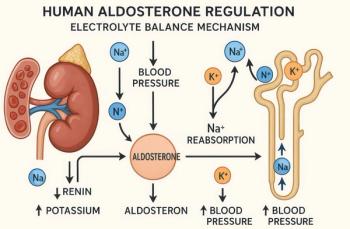
Periprocedural Dabigatran: Risk for Increased Bleeding, Thromboembolism
Periprocedural dabigatran increases the risk of bleeding and thromboembolic complications compared with warfarin during radiofrequency ablation of AF.
The era of novel anticoagulants has generated a number of new alternatives to warfarin for preventing stroke in patients with atrial fibrillation (AF). Expanded choice has also created a number of new problems, however, especially with respect to anticoagulation strategies in the periprocedural setting.
The notion that invasive cardiac procedures may be conducted while the patient continues to receive systemic anticoagulation has recently emerged as a novel paradigm with a favorable risk-benefit ratio. Cardioablation is one of the most common procedures for which patients with refractory AF may be referred.
To temper the high risk of thromboembolism associated with AF ablation, the procedure is most often performed without interrupting prescribed anticoagulation. To this end, there is increasing interest in using the short-acting novel anticoagulants (ie, dabigatran, rivaroxaban, apixaban) as “bridging” agents. Clinical experience with these drugs for this purpose, however, is somewhat limited and there is no known antidote for these agents. For this reason, further characterizing the risk of periprocedural bleeding is important.
In a small, observational study by Lakkireddy and colleagues,1 uninterrupted warfarin was compared with periprocedural dabigatran during radiofrequency ablation of AF. A total of 290 patients (145 in each arm) undergoing ablation for AF were enrolled in the study. End points of interest were bleeding or thromboembolic complications. The groups were matched for CHADS-2 score, left atrial size, and left ventricular ejection fraction. Those in the dabigatran arm skipped dabigatran on the morning of the procedure and resumed the medication 3 hours after hemostasis was achieved, while those in the warfarin arm did not interrupt their medication. All patients received unfractionated heparin during the procedure.
Those in the dabigatran group had a higher rate of the composite end point of thromboembolic complications of stroke or transient ischemic attack (2.1%, 3 events) compared with the warfarin group (0%, 0 events) (P = .25). There also were more major bleeding complications, such as cardiac tamponade, in the dabigatran group (6%) compared with the warfarin group (1%) (P = .019). In addition, there was also more total bleeding (14% vs 6%; P = .031) and the composite of bleeding and thromboembolic complications (16% vs 6%; P = .009) in the dabigatran group. Based on these data, dabigatran use emerged as an independent predictor of bleeding or thromboembolic complications (OR = 2.76).
Since the half-life of dabigatran is 14 to 17 hours, overlapping effects of unfractionated heparin and dabigatran likely led to the increase in bleeding. And the increased risk of thromboembolism was likely a result of incomplete anticoagulation. Although additional studies are needed, this feasibility study suggests that periprocedural dabigatran increases the risk of bleeding and thromboembolic complications compared with warfarin and should be avoided in procedures that are being done on patients receiving systemic anticoagulation.2References:
1. Lakkireddy D, Reddy YM, Di Biase L, et al. Feasibility and safety of dabigatran versus warfarin for periprocedural anticoagulation in patients undergoing radiofrequency ablation for atrial fibrillation: results from a mutlticenter prospective registry.
2. Winkle RA, Mead RH, Engel G, et al. Safety of dabigatran versus warfarin for periprocedural anticoagulation in patients undergoing radiofrequency ablation for atrial fibrillation.
Newsletter
Enhance your clinical practice with the Patient Care newsletter, offering the latest evidence-based guidelines, diagnostic insights, and treatment strategies for primary care physicians.






























































































































































































































































































































